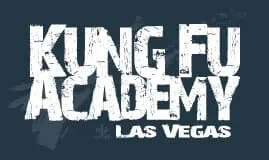Forms in Hung Gar Kung Fu Training
Generations have passed down Hung Gar Kung Fu, also known as Hung Kuen, a traditional Chinese martial art, for centuries. Forms, pre-arranged sequences of movements designed to simulate combat situations, constitute one of the key components of Hung Gar Kung Fu. Any Hung Gar Kung Fu practitioner incorporates these forms into their training regimen, which play a vital role in developing the necessary skills and techniques for effective self-defense.
Numerous and diverse forms make up Hung Gar Kung Fu, with each form offering its unique set of techniques and strategies. Let's examine some of the most popular forms of Hung Gar Kung Fu:
Gung Ji Fook Fu Kuen (Taming the Tiger Fist) acts as one of the most foundational forms in Hung Gar Kung Fu. Powerful, explosive movements characterize this form, designed to develop strength and power in the practitioner's techniques. The form centers on strong stances, punches, kicks, and blocks that mimic the movements of a tiger.
Forms in Hung Gar Kung Fu Training
Fu Hok Seung Ying Kuen (Tiger Crane Fist) fuses the power of the tiger with the agility of the crane. The tiger embodies strength and power, while the crane signifies grace and agility. This form highlights the use of both external and internal strength, developing the practitioner's overall martial arts skills as a well-rounded form.
Tit Sin Kuen (Iron Wire Fist) offers a unique form that concentrates on cultivating internal energy or Qi. Slow, deliberate movements characterize this form, assisting the practitioner in developing a strong body and mind. The form also utilizes Iron Wire techniques, which involve flexing and tensing the muscles to imitate the movement of a metal wire.
Ng Mui Siu Lam Kuen (Five Elders Fist) bases itself on the techniques of the Five Elders of Shaolin, among the most skilled martial artists of their time. This form accentuates both external and internal strength and employs quick, explosive movements.
Sup Ying Kuen (Ten Forms Fist) consists of ten distinct movements designed to develop both power and precision in the practitioner's techniques. Each movement concentrates on a different aspect of martial arts training, such as balance, agility, and strength.
Sup Ying Kuen
Chiu Choi Kuen (Bridge-Seeking Fist) is a unique form that focuses on developing bridging techniques, neutralizing an opponent's attack, and creating openings for counterattacks. The form stresses the use of circular movements and shifting footwork to generate angles and openings for attack.
Hung Gar Kung Fu forms serve as essential components in any practitioner's training regimen. They contribute to the development of skills and techniques necessary for effective self-defense while also promoting physical fitness and mental discipline. The forms of Hung Gar Kung Fu offer a lifetime of learning and self-improvement, whether for a beginner or an advanced practitioner.
Hung Gar Kuen
In conclusion, the forms of Hung Gar Kung Fu form the core of this martial art. Each form introduces a unique set of techniques and strategies, honing the practitioner's overall martial arts skills, internal energy, and physical fitness. The forms foster mental discipline and effective self-defense, making them indispensable for any practitioner's training regimen, from beginners to advanced practitioners. The forms of Hung Gar Kung Fu provide a lifetime of learning and self-improvement.
